Snoring solution: How we became a traveling couple (again)
Snoring solution: Who we became a traveling couple (again)We had a traveling draught lasting nearly six years; the time it took to have kids and find an anti-snoring solution that worked. For those ADD readers who don’t have the time or desire to read the context, the failsafe is Snore Guard. Less (and more) expensive options are available (see below) but this is an economical way to cease snoring and get traveling.
The backstory
All was well in my marriage for the first six years. Only later, when the soft bubbles turned into stones craping together did I realize why: we were young, the room was always a brisk 65 degrees, and I didn’t have children. Post children, my second-sense, ever-alert state came in to being, and the house was a lot warmer (72 is warm for us). Heat begat a new level of sleep restlessness, and I feel and hear every turn and bump Rog made throughout the night.
Enter the solutions
Because Rog and I always traveled for business pre-kids, we saw parts of the world, but separate, not together. When our eldest daughter turned three, I was taking her on weekly trips to Arizona, so she became a little road warrior. It was great—as long as Rog wasn’t with us, and in the same room. For seven years, he found, bought, used, and discarded every…single…snoring solution on the market, from the strips to nose sprays, along with various mouth pieces. The early products failed miserably (but some were great for cleaning out the nose pores), and the mouth guards pulled his lips or cheeks, and even some strapped around his ears. Rog thought he’d found the motherland when two fishing buddies told him they’d purchased the same “mouth-covering-oxygen-pushing,” device. The only catch with that was the size, the inconvenience (you must train yourself not to turn over during the night) and the non-sexy appeal of your husband sitting there, looking like he’s come back from the operating room table.
The ultimatum
In 2015, we’d had a sudden realization of our mortality when two friends unexpectedly die. We began to change our priorities, and that mean giving our family experiences, not things. The big catch was this: I could not, would not, travel with Rog if he didn’t fix the snoring issue. My max was three days without sleep, which limited our travels to four days. Further, I told him we needed a few shorter “test trips” before we launched off on a big journey.
Life changer
Armed with the carrot of a vacation, Rog applied his own stick: He arranged not one, but eight trips in a single year. He determined he wasn’t going to leave this life without being with himself and “his girls” as he calls us. I feared for my sleep (and my life) as he set about trying and testing the various types of snore guards, for he had shut down the oxygen-breathing-mask outright.
Rog went to his vault of all wisdom: his hockey buddies. Some lacking critical teeth, many of a large girth, which makes rolling over (reducing snoring) challenging. They swore by the Snore Guard Pro. Rog goes out, buys not one, but two. They mold and meld to the teeth, holding the jaw open just enough to allow the air to pass through. This is all it takes to have a wonderful, blissful night of sleep.
The benefit is the cost. It’s about $90 bucks, easy to customize and use. The downside, according to Rog, is that it creates a soreness in the jaw muscles, which takes some time to get use to. It wasn’t uncommon for him to remove it half-way, or three-quarters of the way through the night because his jaw hurt. Nonetheless, on our 3-4 day trips from Alaska to Arizona, where the temperature varied and we were with and without kids, the result was consistent: snore-free until he removed the device. The device also comes with a small case so the notion of the guard and associated mouth juices and grunge isn’t foremost when you see it.
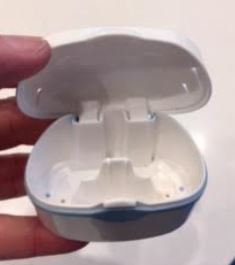
the case 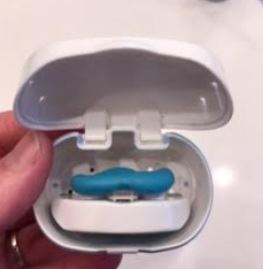
top view 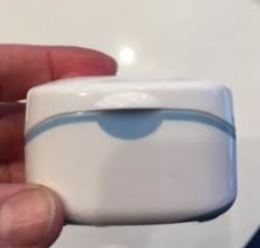
size comparison
Avoid the non-molding versions
While cheaper, by 30-40 dollars, the versions that don’t allow molding not only hurt, according to Rog, but barely work. The size is also an issue, because the two primary versions are deeper and wider. “I threw away a hundred bucks trying to save forty,” was Rog’s conclusion.
Also, beware the “night guard,” phrase. This tends to imply a clear or colored teeth guard similar to what hockey players wear to protect their teeth. It’s designed for clenching and grinding, not snore prevention. This is another way to throw away good money (which Rog did on his search for sleeping nirvana).
Improving on Good
In search of the “ultimate” snore guard, Rog visited his dentist, convinced a better solution was available. Sure enough, for the bargain basement price of @$400, the dentist would create a custom version made for his teeth. Grateful for the advice, but unwilling to pay that type of premium, Rog did what just about every human with an Internet connect did: he went on-line and found a product for half the price, roughly $195. Once it stood the test of our next travel trip, he purchased another, “just in case.” A good thing too, because these little things are easy to make and misplace.
The key: After spending further hundreds of dollars, Rog determined that the BEST product is the one that is “upside down.” It holds the top four teeth (only) in place, resting the base on the lower teeth. Because he doesn’t want his mouth put out for public viewing, I’m willingly showing you examples in my own mouth, using his mouth piece. (Appreciate those choppers!)
The proof
Two days before we headed to Europe, sans kids, for two weeks, Rog tried out the new device. Perfection…and for two weeks, he snored not a single time. That was the beginning of emancipation from snoring purgatory. Four years later, our family is poster picture for mouth guards that work, because without them, we wouldn’t be traveling, at least not together.
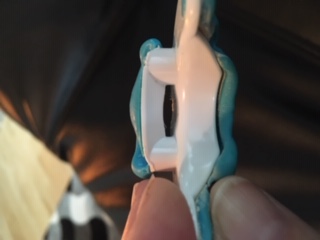
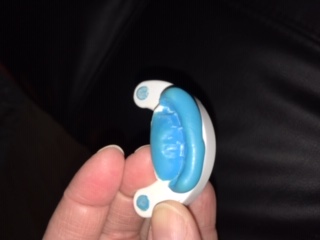
the top 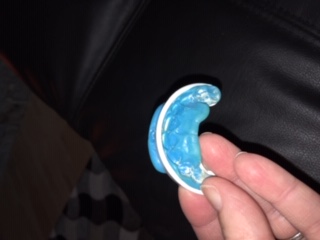
the bottom 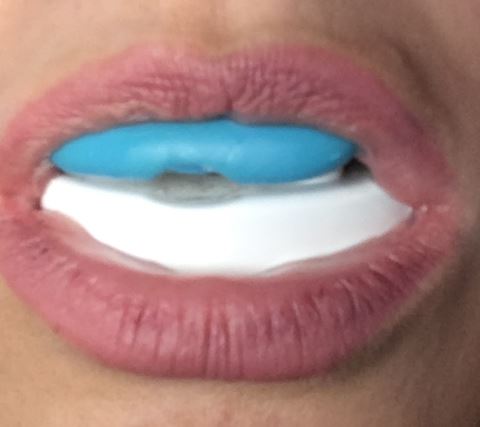
inside the mouth
